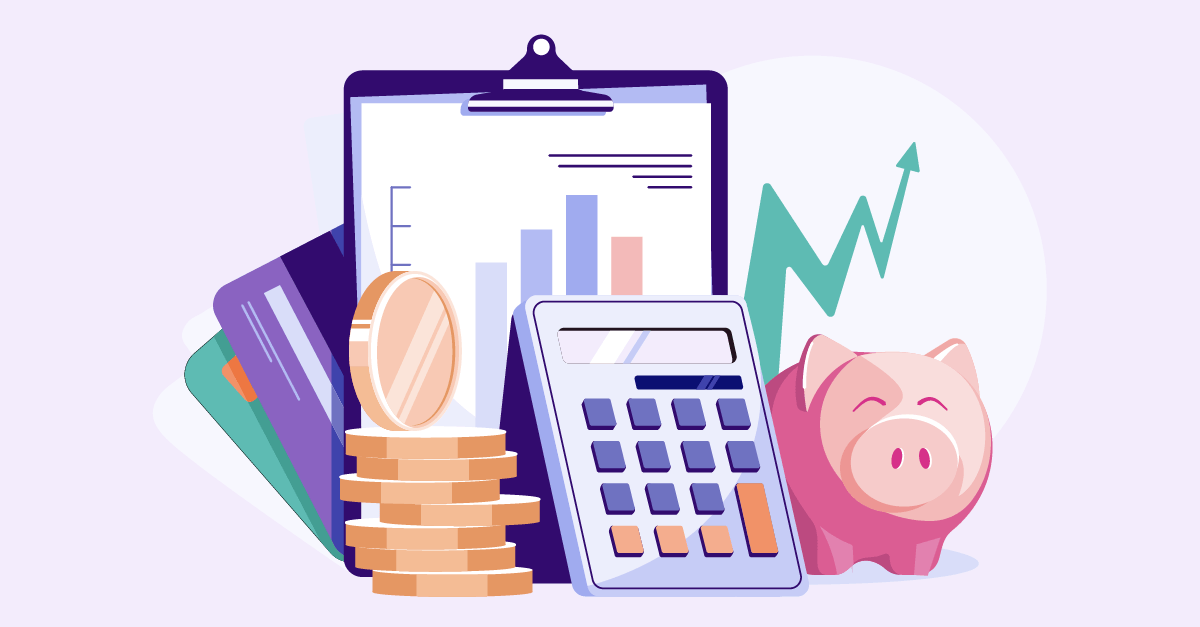Your organization probably takes great care to maintain its financial stability year after year. However, do you consider the financial stability of your vendors? When a vendor has poor financial stability, you may see a decline in service levels, termination of products or services, and rapid staff turnover.
Since these issues affect your business operations, periodically review your vendor’s financials as a part of your ongoing due diligence.
Evaluating Your Vendor’s Financial Stability in 5 Steps
Here are five recommended steps to evaluate your vendor’s financial stability:
- Review financial reports: If the company/vendor is public, you should be able to find the form 10-K or audited financial statement online. Request directly from the vendor if it’s a private company. Review key documents like the balance sheet, income statement, and cash flow statement. These convey a more complete picture of a vendor’s financial health.
- Balance sheet: Provides details on a vendor’s financial position at a given point in time. Review total cash, accounts receivable (AR), current and total assets, current debt and total debt, current and total liabilities, and net worth position.
- Income statement: Shows how the vendor generates revenue and whether the vendor is profitable. Review total revenue, gross, operating, and net income and margin percentages.
- Cash flow statement: Provides context into where the vendor’s cash comes from and where it’s being used. Review cash flow from operations and capital expenditures.
- Utilize SMEs: Vendor financial documents can be tricky to review without the right qualifications. Subject matter experts (SMEs) like CPAs should review the vendor's financial reports to ensure you’re getting a qualified opinion on the vendor’s financial stability.
- Ask the right questions: The following questions reveal key information about the vendor’s financial stability:
- How does the vendor generate revenue, invest in its business, and drive profits? Find this information in the vendor’s income statement.
-
- Is the vendor generating enough revenue and/or do they have enough capital to support its ongoing operations? This can significantly guide the vendor’s financial health. The cash flow statement is a helpful place to start to review this information.
-
- What is the vendor’s debt-to-worth? This may be challenging to validate, but it’s a critical factor. The balance sheet covers total debt and total cash.
-
- What is the vendor’s tangible net worth? If the vendor has a large percentage of goodwill and intangibles, this may imply that it’s unable to convert its assets into capital or liquidity. Use all three vendor financial statements to put together key ratios – this shows goodwill/intangibles.
-
- Will the vendor be able to continue operations at its current cash level? The cash flow statement shows how the vendor generates cash across its internal and external activities.
- Prepare an assessment: The assessment includes the balance sheet, income statement, cash flow, key ratios and supporting commentary/conclusion. The analyst/SME should always provide a clear summary conclusion in the assessment, which provides key takeaways on the vendor’s financial stability. Based on the assessment, your organization can determine how to move forward.
- Create a financial stability rating: A financial health rating can be categorized into four simple categories – Confident, satisfactory, needs monitoring, and intense monitoring. These ratings provide consistent, easy-to-understand results, and an overall cadence on how often to conduct reviews on vendors that fit in the different rating categories. Perform this on an annual basis at a minimum, based on the vendor’s risk rating.
Related: How to Assess Financial Risk of a Supplier
Vendor Financial Stability Red Flags: What to Do Next
After you’ve evaluated the vendor’s financial stability, you may be wondering what to do if you discover any red flags.
Here are suggestions on what to do if the vendor has poor financial stability:
- Request additional information – Ask the vendor for more documentation to address concerns. This shows how the vendor mitigates financial health risks. For example, if a vendor’s current liquidity and lack of profitability are red flags, it may provide additional information that shows it has either recently received additional outside funding or has easy access to capital to make up for current liquidity concerns.
- Use your service level agreements – Use well-defined contractual service level agreements to address any vendor financial performance clauses. Whether you want to exit the contract or receive some sort of concession, include these expectations in your vendor contract. This may be as simple as requiring the vendor to provide annual financials or as detailed as requiring the vendor to maintain specific financial metrics.
- Continuously monitor the vendor – Red flags in the vendor’s financial stability may require more frequent monitoring. Increase your monitoring schedule of the vendor’s financial status and communicate often with the vendor to resolve issues.
- Consider an alternate vendor – If your current vendor has significant deficiencies, you may want to consider using another as a replacement or supplement. Develop contingency plans for the potential of a vendor failure.
Related: 5 Steps for a Successful Vendor Exit Strategy
It’s critical to understand your vendor’s financial stability as a part of a robust third-party risk management program. Take these steps to stay informed of your vendor’s financial health to protect your organization from various risks.
Financial health impacts a vendor’s ability to provide products and services at the level you expect. How should you assess a vendor’s financial performance?
Find out in this free eBook.







.gif?width=1920&name=Sample-Graphic-Animation%20(1).gif)



